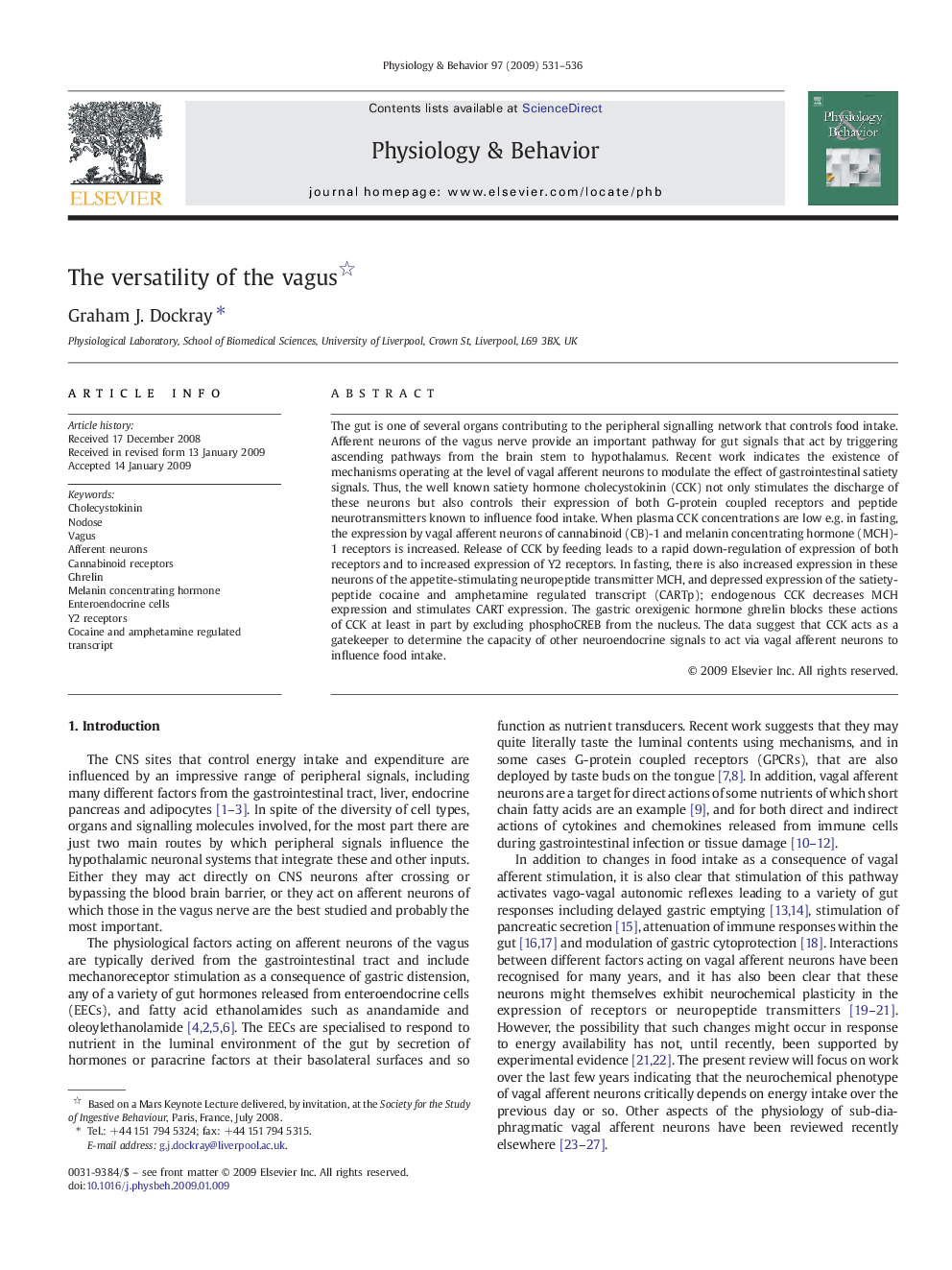| کد مقاله | کد نشریه | سال انتشار | مقاله انگلیسی | نسخه تمام متن |
|---|---|---|---|---|
| 2845258 | 1166385 | 2009 | 6 صفحه PDF | دانلود رایگان |

The gut is one of several organs contributing to the peripheral signalling network that controls food intake. Afferent neurons of the vagus nerve provide an important pathway for gut signals that act by triggering ascending pathways from the brain stem to hypothalamus. Recent work indicates the existence of mechanisms operating at the level of vagal afferent neurons to modulate the effect of gastrointestinal satiety signals. Thus, the well known satiety hormone cholecystokinin (CCK) not only stimulates the discharge of these neurons but also controls their expression of both G-protein coupled receptors and peptide neurotransmitters known to influence food intake. When plasma CCK concentrations are low e.g. in fasting, the expression by vagal afferent neurons of cannabinoid (CB)-1 and melanin concentrating hormone (MCH)-1 receptors is increased. Release of CCK by feeding leads to a rapid down-regulation of expression of both receptors and to increased expression of Y2 receptors. In fasting, there is also increased expression in these neurons of the appetite-stimulating neuropeptide transmitter MCH, and depressed expression of the satiety-peptide cocaine and amphetamine regulated transcript (CARTp); endogenous CCK decreases MCH expression and stimulates CART expression. The gastric orexigenic hormone ghrelin blocks these actions of CCK at least in part by excluding phosphoCREB from the nucleus. The data suggest that CCK acts as a gatekeeper to determine the capacity of other neuroendocrine signals to act via vagal afferent neurons to influence food intake.
Journal: Physiology & Behavior - Volume 97, Issue 5, 14 July 2009, Pages 531–536